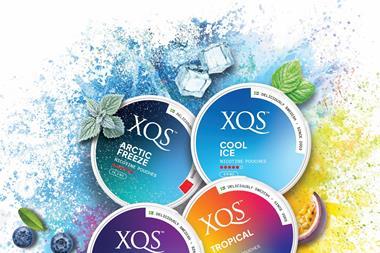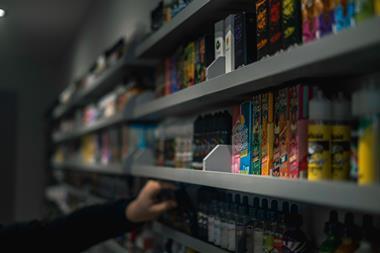When the coalition government came into power last May, those involved in the tobacco industry breathed a collective sigh of relief. But were they too hasty, asks Ronan Hegarty
Was the tobacco industry duped by the coalition government?
Like so many other voters, it listened eagerly to the pre-election spiel of the Tories and Lib Dems, only to find the new government bewilderingly non-committal on the big issues.
On assuming power, the coalition was virtually silent on the contentious issue of the display ban, but then, last November Andrew Lansley, secretary of state for health, threw a major spanner into the works by announcing his support for forcing tobacco into plain packaging.
The upshot? It is not clear whether the government views plain packaging as an alternative to the display ban, due to come into force in England for larger stores in October and small stores in 2013, or as something that should be introduced on top of the display ban.
While retailers hope the introduction of the display ban will be postponed, if not abandoned, the current uncertainty surrounding the government's proposals has left both manufacturers and retailers in limbo.
Last month, The Grocer revealed that many retailers unwilling to incur potentially unnecessary expenses have yet to put plans in place to prepare their stores to comply with the ban. Health lobbyists, meanwhile, insist the tobacco manufacturers will pay for changes to stores, something producers are strongly denying.
"We have no intention of paying for retailers' shops to be adjusted in the event of a display ban," says Imperial Tobacco UK communications manager Iain Watkins. "If the government is intent on such unnecessary and ill-conceived legislation, it should be prepared to help retailers implement it."
The arguments for and against the display ban have been well rehearsed over the last few years, with the idea of plain packaging frustrating suppliers and retailers alike. The trade is convinced plain packaging will do absolutely nothing to stop cigarettes getting into the wrong hands, and will serve only to make it easier for those involved in the illicit trade.
"The government would simply be handing over the brands to criminals who would be under no obligation to use plain packs," says Jeremy Blackburn, head of communications at Japan Tobacco International.
"Governments need to ask themselves whether they want tobacco products to be sold by a responsible, legitimate business or by criminal gangs," says Watkins.
Plain packs are also potentially easier to copy, he adds, citing the previous government's 2008 tobacco consultation, which stated: "Plain packaging may exacerbate the illicit tobacco market, as it could be easier for counterfeit products to replicate the plain packages than current tobacco packaging."
At the moment, the legitimate tobacco trade is enjoying strong sales growth. Sales of cigarettes were up 4.3% to £11.3bn last year, while roll-your-own (RYO) tobacco sales soared up 18.2% to £1.2bn [Nielsen 52w/e 30 December 2010]. Cigars alone saw a decline in sales, falling by 5.4% to just under £300m.
There really is only one trend in the market given the economic climate, and that is downtrading. Smokers are increasingly turning to mid and lower-priced cigarettes. It is not a new trend but the growth of economy cigarettes of late has been nothing short of extraordinary. All the major tobacco manufacturers are enjoying staggering growth for their respective economy brands, and the trend could well have permanently redefined the category.
According to Imperial Tobacco, economy-priced cigarettes made up more than 25% of all cigarettes sold in the UK last year. In 2008 this figure was just 11.4%.
Imperial can lay claim to the most successful tobacco brand of the year. Its John Player Special Silver range, launched in November 2008, is now worth £445m and grew by 99.2% for the year to November 2010. That made it not just the fastest-growing tobacco product, but also the fastest-growing grocery brand.
The other big movers were JTI's Windsor Blue, up 68.3% and Sterling, which grew 38.0%. British American Tobacco's economy brand Pall Mall also grew sharply with sales up 54.8% to £234m.
"Value-for-money and RYO brands are still driving growth in the market," says Ronan Barry, BAT UK head of corporate and regulatory affairs. "The economic climate has resulted in more smokers seeking value from purchases without compromising on quality."
While the value of the cigarette market was up 4.3%, volumes actually fell 2.4%. So with the economy end flying, premium brands are being squeezed. The most well-known cigarette brands, Benson & Hedges, Marlboro, Silk Cut and Embassy, all lost sales over the last year, but JTI's Blackburn does not think there is any reason to give up on the premium sector just yet.
"As the economy improves, premium brands will return to growth," he insists. "The sector still accounts for 25% of the market and with these brands the margins are better for retailers."
One way manufacturers are looking to prop up premium sales is by introducing 14-packs to help smokers spread the cost. Other smokers are saving by switching to roll-your-own, a category that continues to grow, helped by a shift in the perception of RYO tobacco and a crackdown in the amount of smuggled and counterfeit tobacco making its way on to the market.
Imperial's Golden Virginia Green is the clear market leader with sales up 3.0% to £434m. However JTI's Amber Leaf has made huge inroads into this lead in the last year with sales up 30.6% to £327m. Meanwhile BAT's Cutters Choice was the fastest-growing RYO brand posting sales growth of 35.7% to £120m.
BAT has predicted that the current growth in RYO category will continue for the next three years. So confident is it that it launched a RYO variant of its Pall Mall brand in December, on the grounds that the arrival of new smokers into the RYO arena had created a demand for recognised brands to aid their transition.
This new launch follows that of Benson & Hedges rolling tobacco 2009, and other leading brands are expected to follow suit. But with the spectre of the packaging ban hovering over the industry, the question remains: 'Is innovation enough?'
Focus On Tobacco
Was the tobacco industry duped by the coalition government?
Like so many other voters, it listened eagerly to the pre-election spiel of the Tories and Lib Dems, only to find the new government bewilderingly non-committal on the big issues.
On assuming power, the coalition was virtually silent on the contentious issue of the display ban, but then, last November Andrew Lansley, secretary of state for health, threw a major spanner into the works by announcing his support for forcing tobacco into plain packaging.
The upshot? It is not clear whether the government views plain packaging as an alternative to the display ban, due to come into force in England for larger stores in October and small stores in 2013, or as something that should be introduced on top of the display ban.
While retailers hope the introduction of the display ban will be postponed, if not abandoned, the current uncertainty surrounding the government's proposals has left both manufacturers and retailers in limbo.
Last month, The Grocer revealed that many retailers unwilling to incur potentially unnecessary expenses have yet to put plans in place to prepare their stores to comply with the ban. Health lobbyists, meanwhile, insist the tobacco manufacturers will pay for changes to stores, something producers are strongly denying.
"We have no intention of paying for retailers' shops to be adjusted in the event of a display ban," says Imperial Tobacco UK communications manager Iain Watkins. "If the government is intent on such unnecessary and ill-conceived legislation, it should be prepared to help retailers implement it."
The arguments for and against the display ban have been well rehearsed over the last few years, with the idea of plain packaging frustrating suppliers and retailers alike. The trade is convinced plain packaging will do absolutely nothing to stop cigarettes getting into the wrong hands, and will serve only to make it easier for those involved in the illicit trade.
"The government would simply be handing over the brands to criminals who would be under no obligation to use plain packs," says Jeremy Blackburn, head of communications at Japan Tobacco International.
"Governments need to ask themselves whether they want tobacco products to be sold by a responsible, legitimate business or by criminal gangs," says Watkins.
Plain packs are also potentially easier to copy, he adds, citing the previous government's 2008 tobacco consultation, which stated: "Plain packaging may exacerbate the illicit tobacco market, as it could be easier for counterfeit products to replicate the plain packages than current tobacco packaging."
At the moment, the legitimate tobacco trade is enjoying strong sales growth. Sales of cigarettes were up 4.3% to £11.3bn last year, while roll-your-own (RYO) tobacco sales soared up 18.2% to £1.2bn [Nielsen 52w/e 30 December 2010]. Cigars alone saw a decline in sales, falling by 5.4% to just under £300m.
There really is only one trend in the market given the economic climate, and that is downtrading. Smokers are increasingly turning to mid and lower-priced cigarettes. It is not a new trend but the growth of economy cigarettes of late has been nothing short of extraordinary. All the major tobacco manufacturers are enjoying staggering growth for their respective economy brands, and the trend could well have permanently redefined the category.
According to Imperial Tobacco, economy-priced cigarettes made up more than 25% of all cigarettes sold in the UK last year. In 2008 this figure was just 11.4%.
Imperial can lay claim to the most successful tobacco brand of the year. Its John Player Special Silver range, launched in November 2008, is now worth £445m and grew by 99.2% for the year to November 2010. That made it not just the fastest-growing tobacco product, but also the fastest-growing grocery brand.
The other big movers were JTI's Windsor Blue, up 68.3% and Sterling, which grew 38.0%. British American Tobacco's economy brand Pall Mall also grew sharply with sales up 54.8% to £234m.
"Value-for-money and RYO brands are still driving growth in the market," says Ronan Barry, BAT UK head of corporate and regulatory affairs. "The economic climate has resulted in more smokers seeking value from purchases without compromising on quality."
While the value of the cigarette market was up 4.3%, volumes actually fell 2.4%. So with the economy end flying, premium brands are being squeezed. The most well-known cigarette brands, Benson & Hedges, Marlboro, Silk Cut and Embassy, all lost sales over the last year, but JTI's Blackburn does not think there is any reason to give up on the premium sector just yet.
"As the economy improves, premium brands will return to growth," he insists. "The sector still accounts for 25% of the market and with these brands the margins are better for retailers."
One way manufacturers are looking to prop up premium sales is by introducing 14-packs to help smokers spread the cost. Other smokers are saving by switching to roll-your-own, a category that continues to grow, helped by a shift in the perception of RYO tobacco and a crackdown in the amount of smuggled and counterfeit tobacco making its way on to the market.
Imperial's Golden Virginia Green is the clear market leader with sales up 3.0% to £434m. However JTI's Amber Leaf has made huge inroads into this lead in the last year with sales up 30.6% to £327m. Meanwhile BAT's Cutters Choice was the fastest-growing RYO brand posting sales growth of 35.7% to £120m.
BAT has predicted that the current growth in RYO category will continue for the next three years. So confident is it that it launched a RYO variant of its Pall Mall brand in December, on the grounds that the arrival of new smokers into the RYO arena had created a demand for recognised brands to aid their transition.
This new launch follows that of Benson & Hedges rolling tobacco 2009, and other leading brands are expected to follow suit. But with the spectre of the packaging ban hovering over the industry, the question remains: 'Is innovation enough?'
Focus On Tobacco









No comments yet